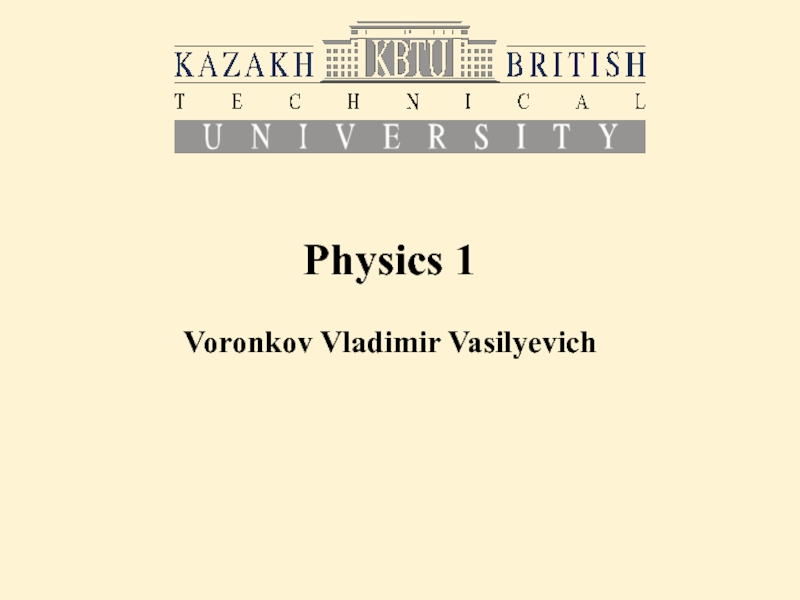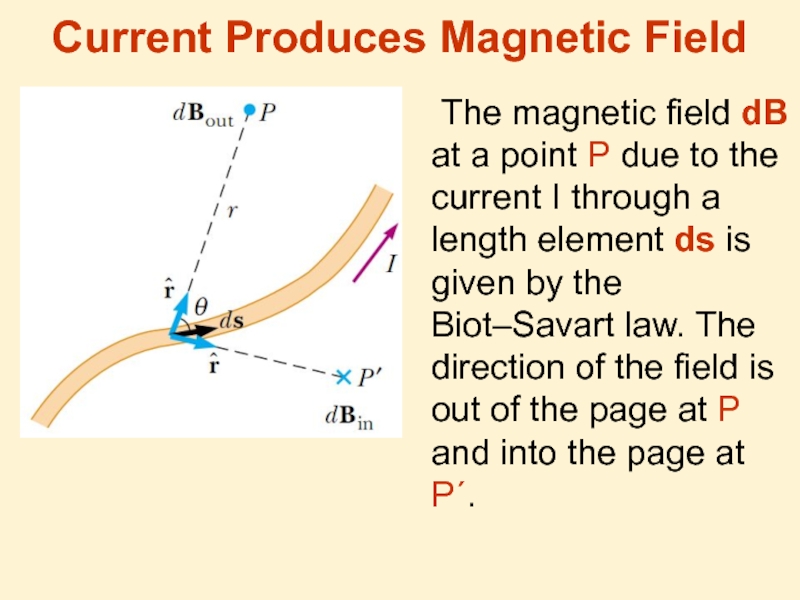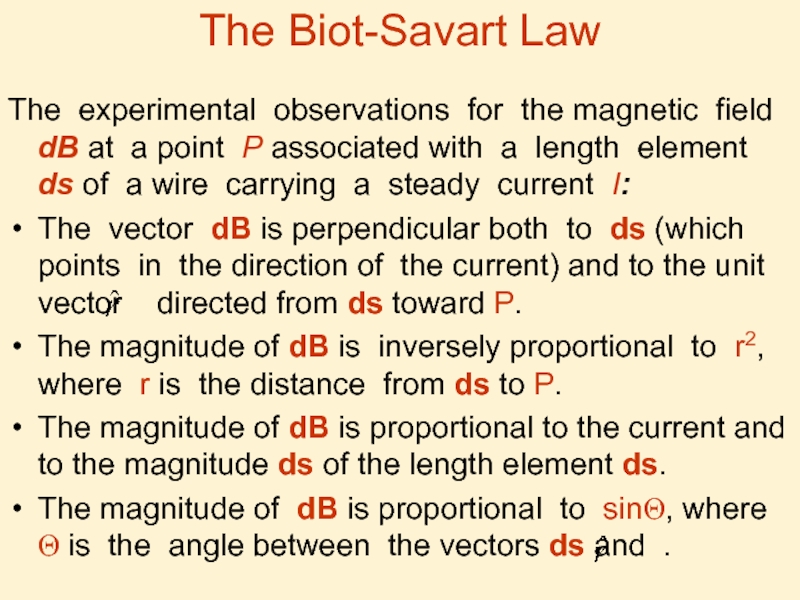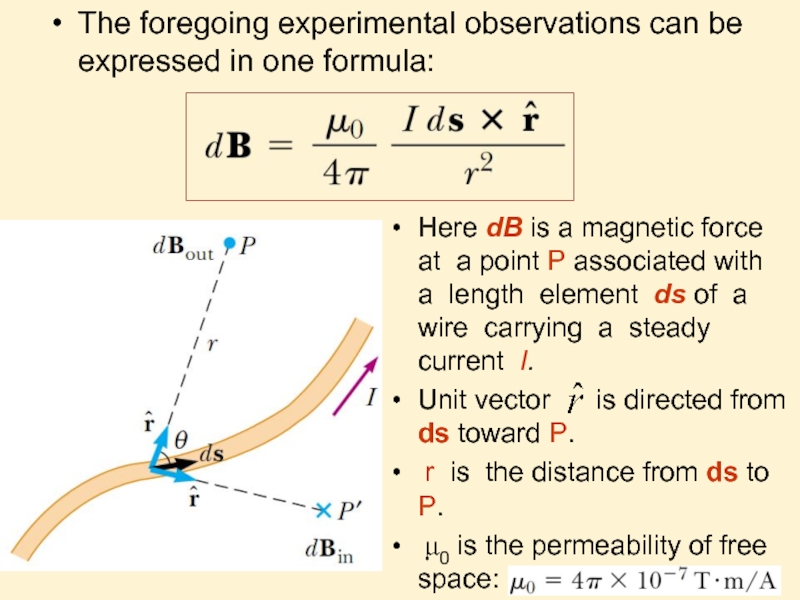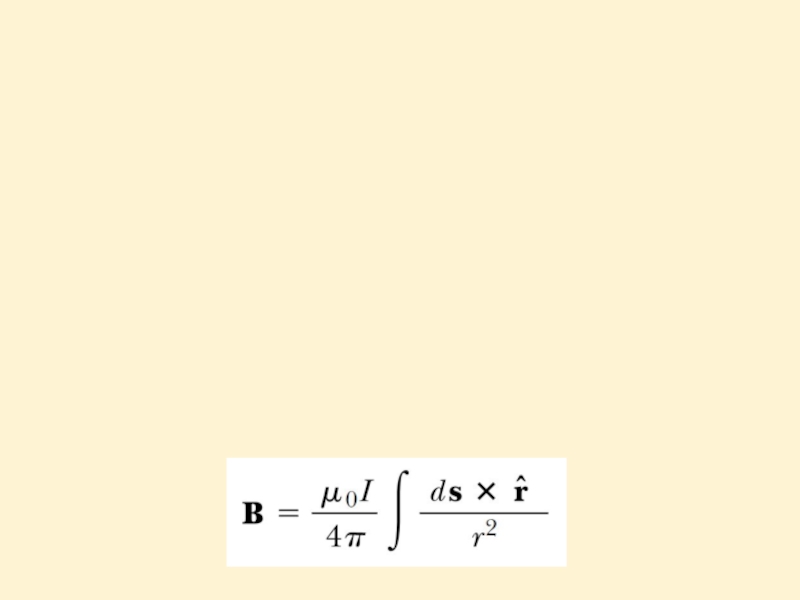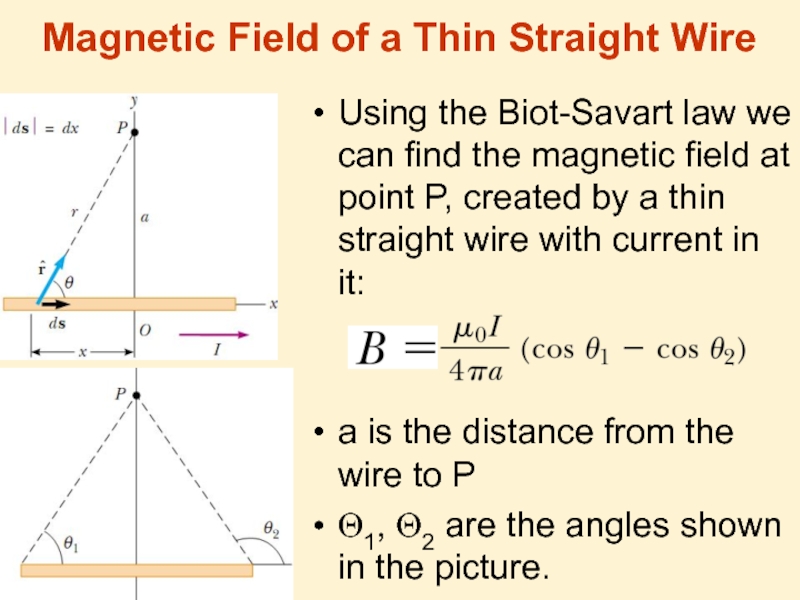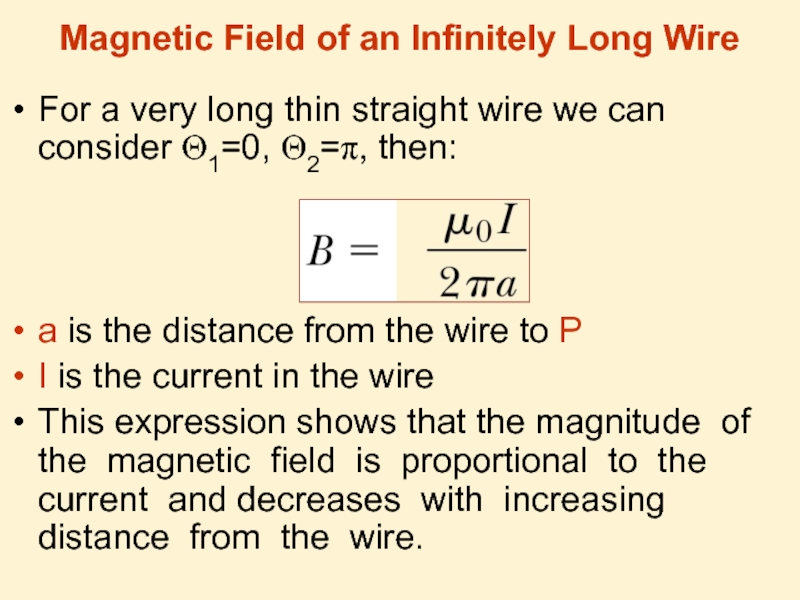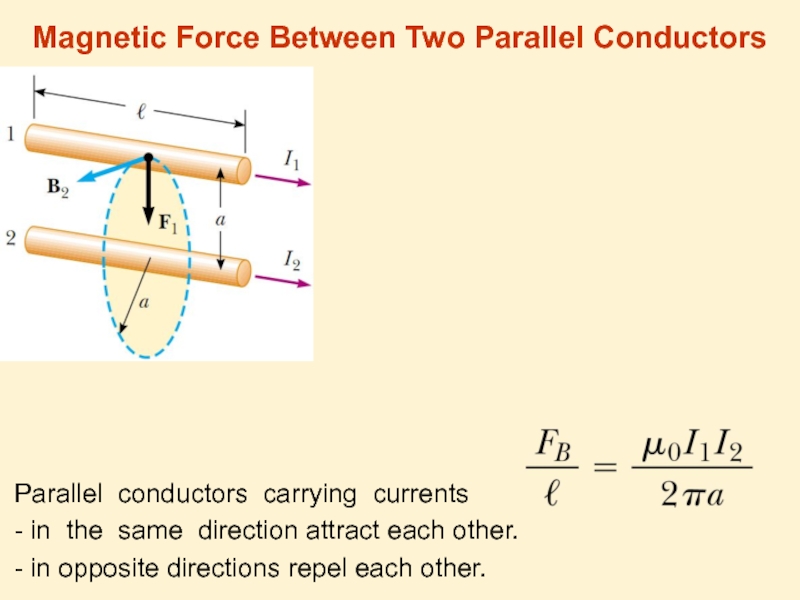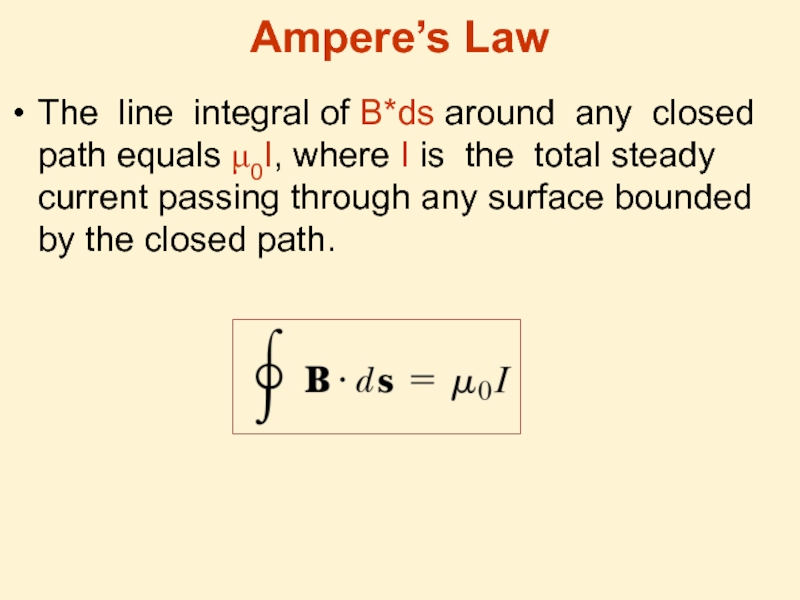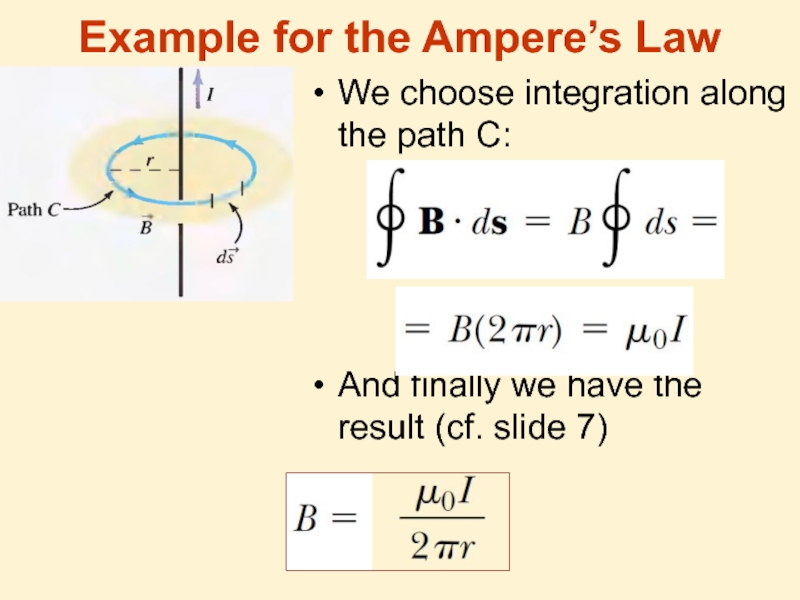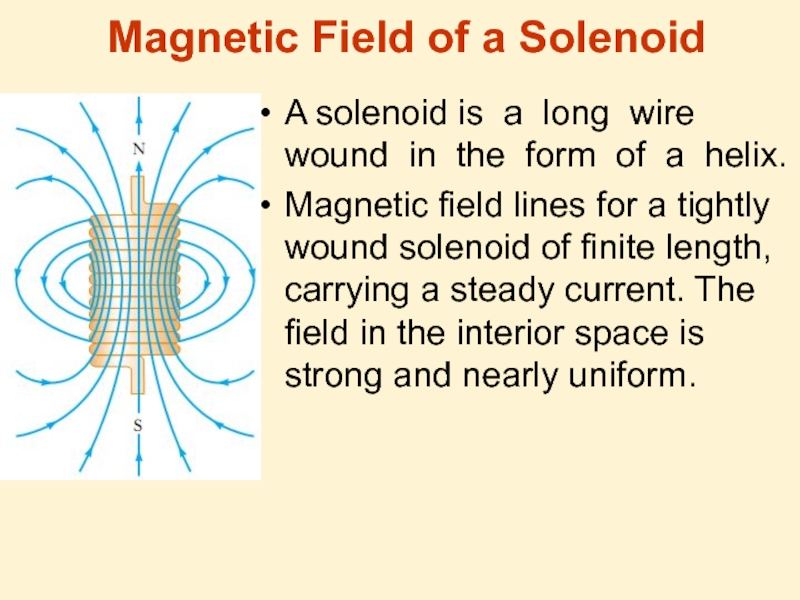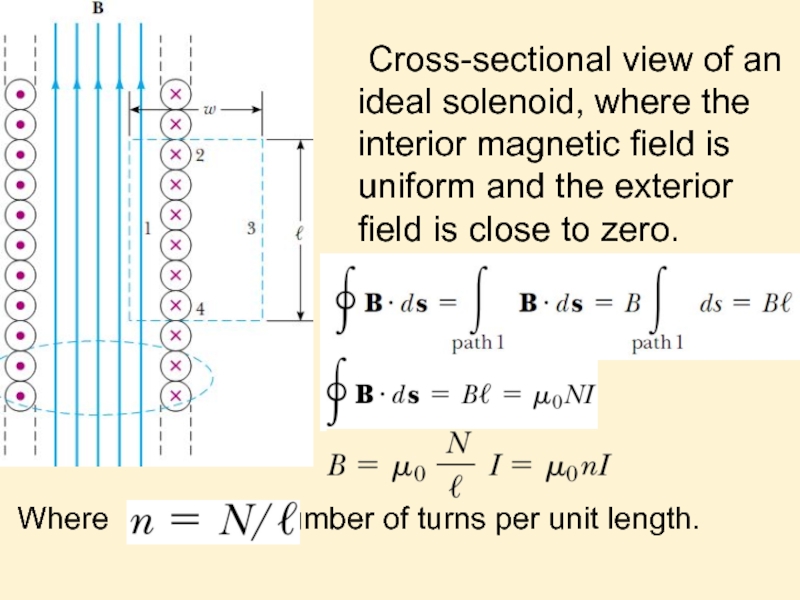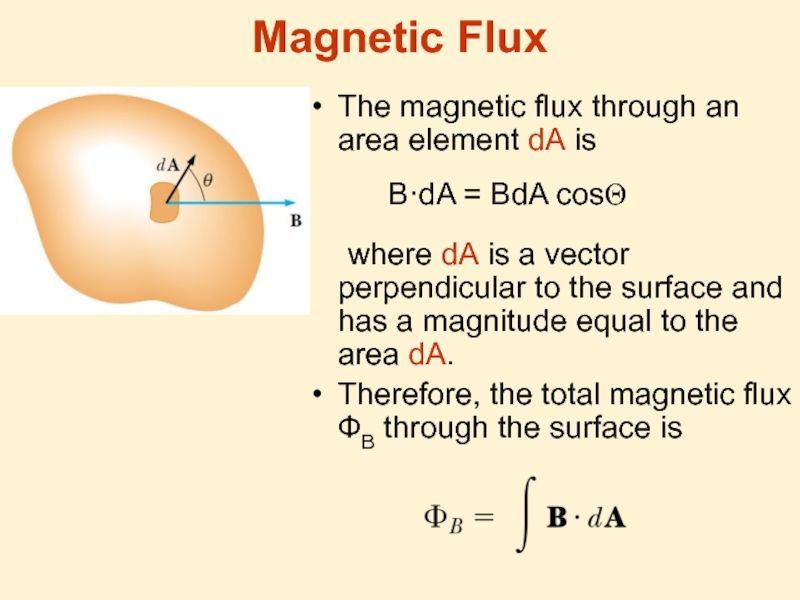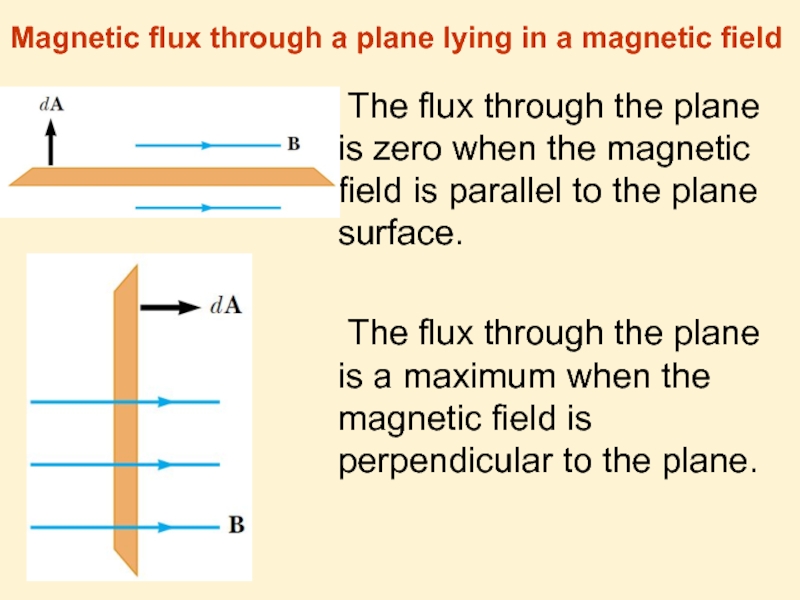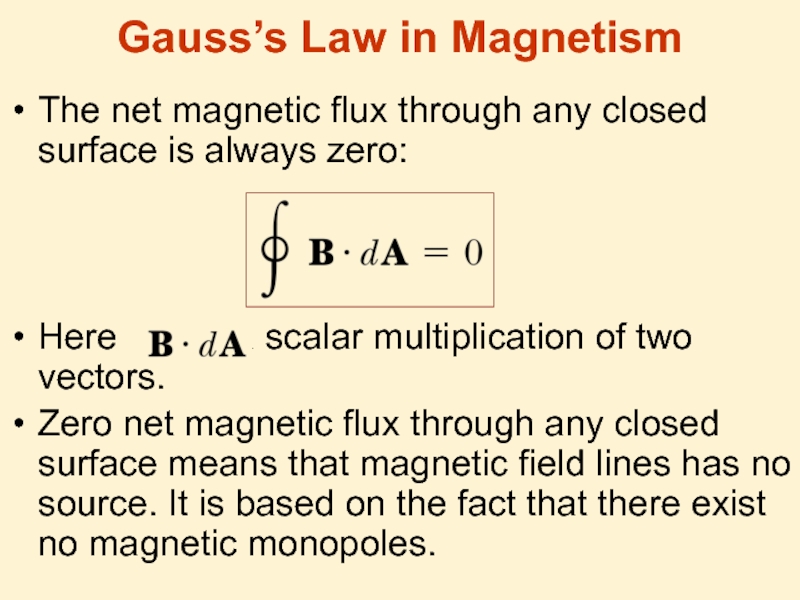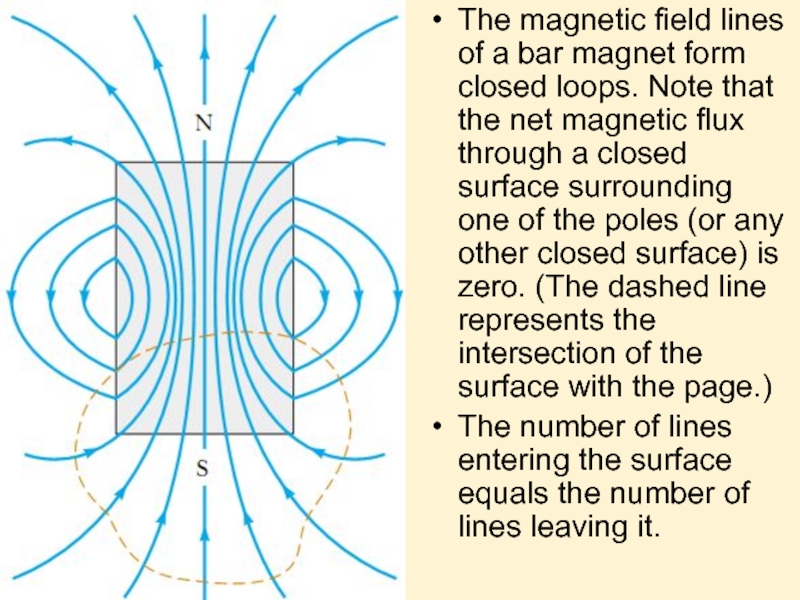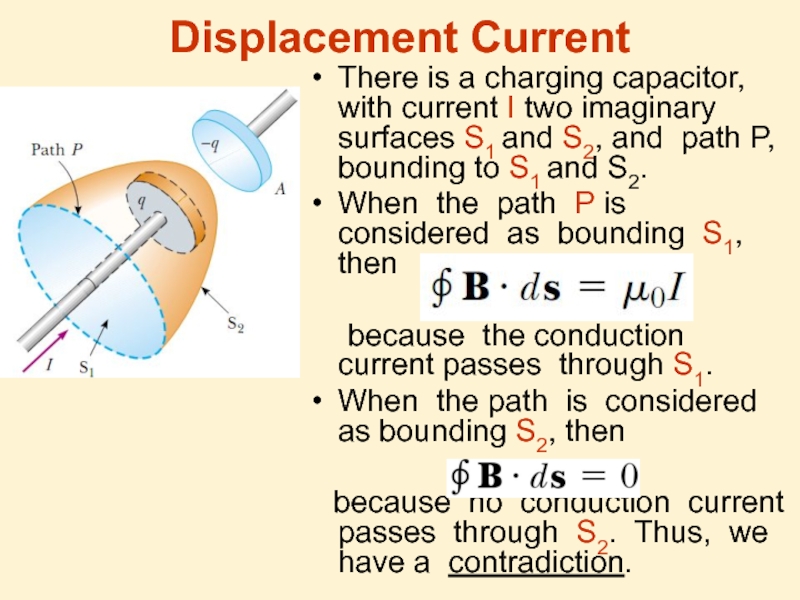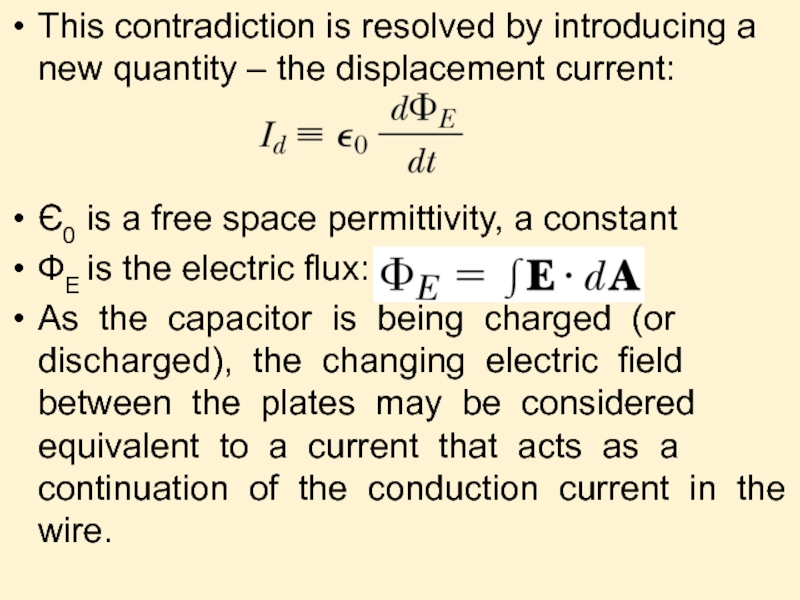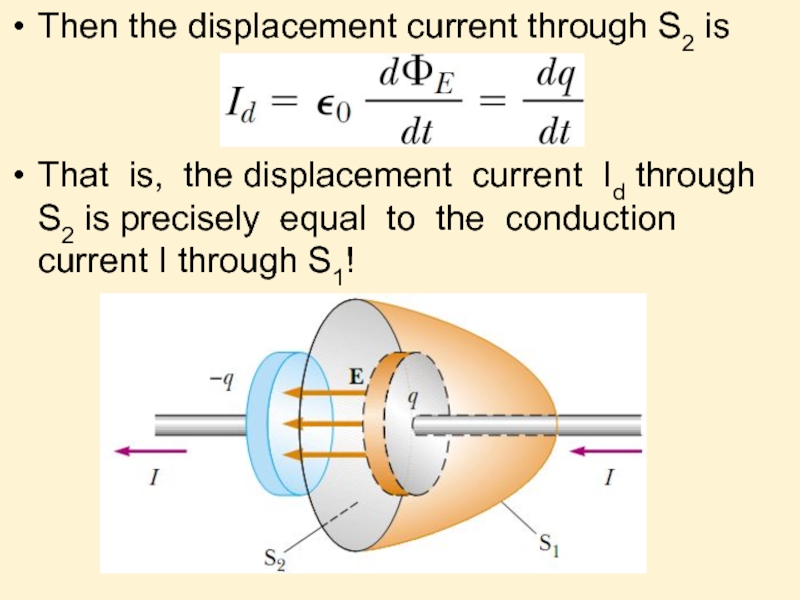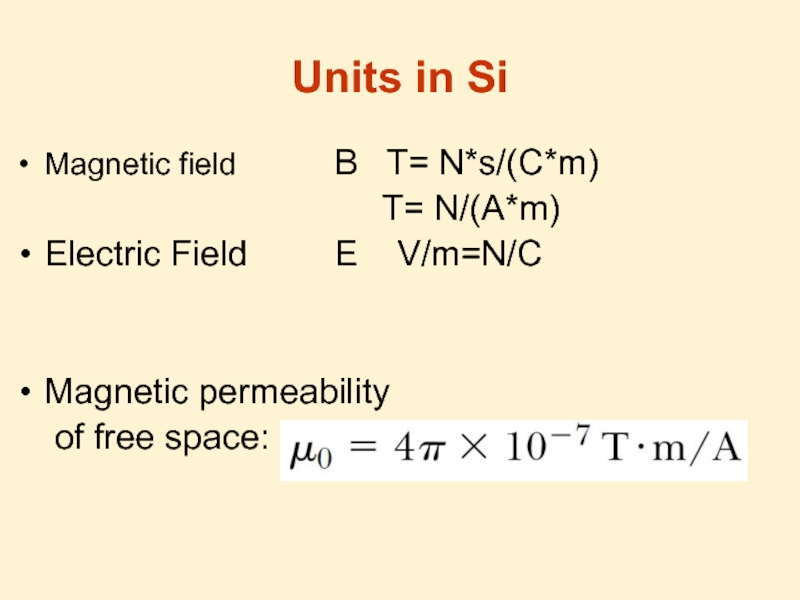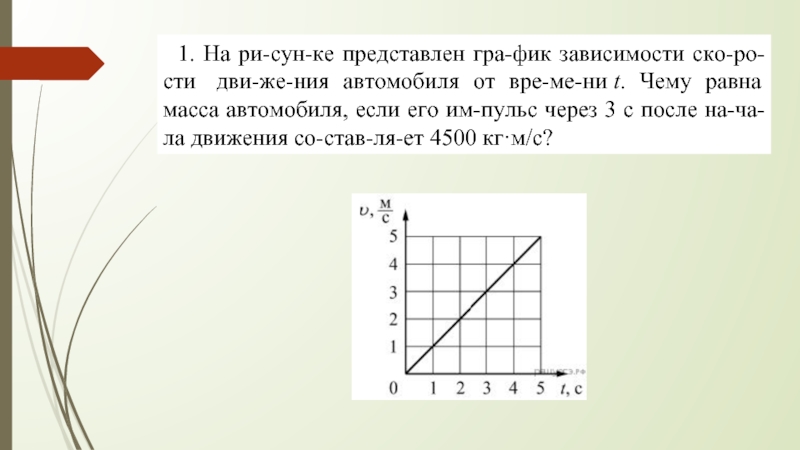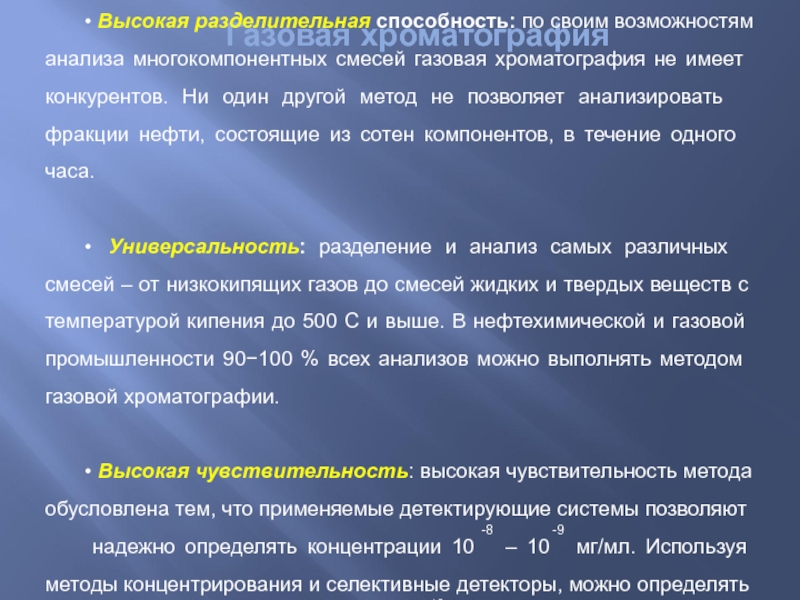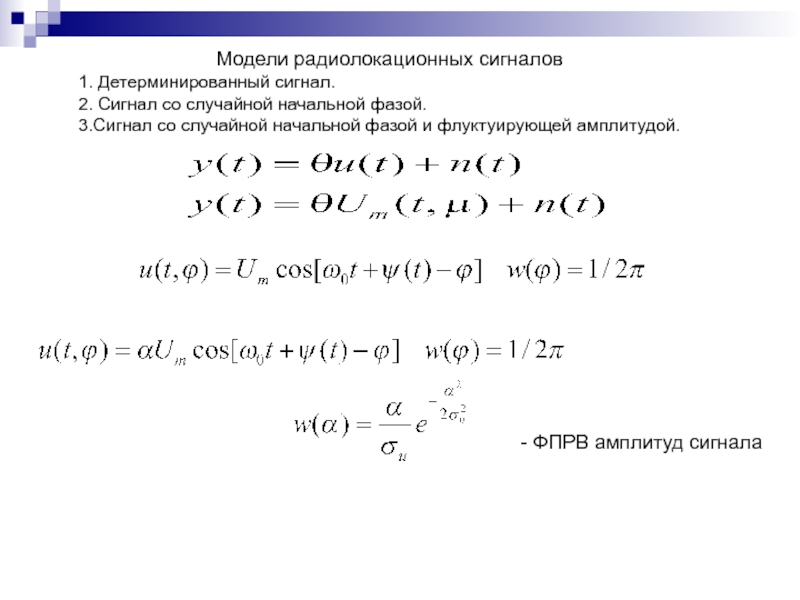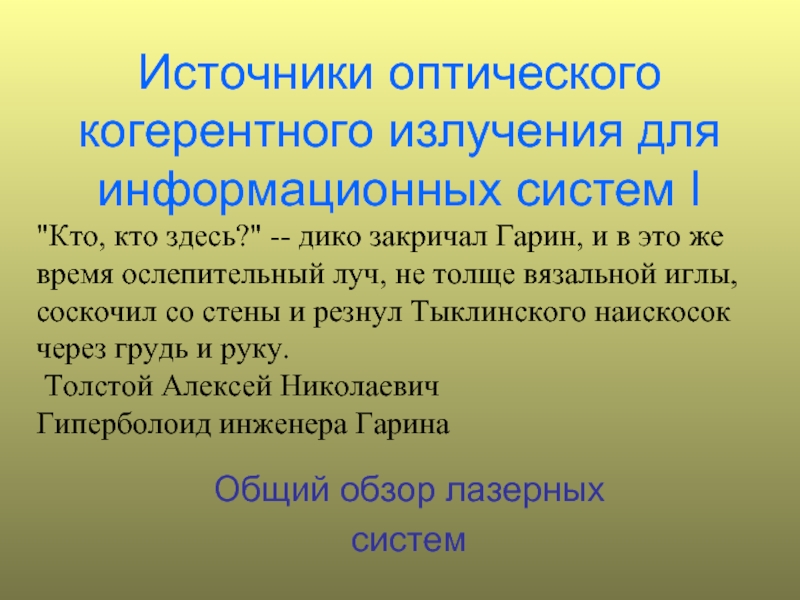- Главная
- Разное
- Дизайн
- Бизнес и предпринимательство
- Аналитика
- Образование
- Развлечения
- Красота и здоровье
- Финансы
- Государство
- Путешествия
- Спорт
- Недвижимость
- Армия
- Графика
- Культурология
- Еда и кулинария
- Лингвистика
- Английский язык
- Астрономия
- Алгебра
- Биология
- География
- Детские презентации
- Информатика
- История
- Литература
- Маркетинг
- Математика
- Медицина
- Менеджмент
- Музыка
- МХК
- Немецкий язык
- ОБЖ
- Обществознание
- Окружающий мир
- Педагогика
- Русский язык
- Технология
- Физика
- Философия
- Химия
- Шаблоны, картинки для презентаций
- Экология
- Экономика
- Юриспруденция
Sources of the мagnetic field/ презентация
Содержание
- 1. Sources of the мagnetic field/
- 2. Lecture 12 Sources of the Magnetic Field
- 3. Current Produces Magnetic Field The magnetic field
- 4. The Biot-Savart Law The experimental observations for
- 5. The foregoing experimental observations can be expressed
- 7. Magnetic Field of a Thin Straight Wire
- 8. Magnetic Field of an Infinitely Long Wire
- 9. Magnetic Field around a Wire Because of
- 10. Magnetic Force Between Two Parallel Conductors
- 11. Ampere’s Law The line integral of B*ds
- 12. Example for the Ampere’s Law We choose
- 13. Magnetic Field of a Solenoid A solenoid
- 14. Cross-sectional view of an ideal solenoid, where
- 15. Magnetic Flux The magnetic flux through an
- 16. The flux through the plane is zero
- 17. Gauss’s Law in Magnetism The net magnetic
- 18. The magnetic field lines of a bar
- 19. Displacement Current There is a charging capacitor,
- 20. This contradiction is resolved by introducing a
- 21. General form of Ampere’s Law So considering
- 22. So the electric flux through S2 is
- 23. Then the displacement current through S2 is
- 24. Units in Si Magnetic field B T=
Слайд 2Lecture 12
Sources of the Magnetic Field
The Biot-Savart Law
Ampere’s Law
The effects of
magnetic fields.
The production and properties of magnetic fields.
The production and properties of magnetic fields.
Слайд 3Current Produces Magnetic Field
The magnetic field dB at a point P
due to the current I through a length element ds is given by the Biot–Savart law. The direction of the field is out of the page at P and into the page at P´.
Слайд 4The Biot-Savart Law
The experimental observations for the magnetic field dB at
a point P associated with a length element ds of a wire carrying a steady current I:
The vector dB is perpendicular both to ds (which points in the direction of the current) and to the unit vector directed from ds toward P.
The magnitude of dB is inversely proportional to r2, where r is the distance from ds to P.
The magnitude of dB is proportional to the current and to the magnitude ds of the length element ds.
The magnitude of dB is proportional to sinΘ, where Θ is the angle between the vectors ds and .
The vector dB is perpendicular both to ds (which points in the direction of the current) and to the unit vector directed from ds toward P.
The magnitude of dB is inversely proportional to r2, where r is the distance from ds to P.
The magnitude of dB is proportional to the current and to the magnitude ds of the length element ds.
The magnitude of dB is proportional to sinΘ, where Θ is the angle between the vectors ds and .
Слайд 5The foregoing experimental observations can be expressed in one formula:
Here dB
is a magnetic force at a point P associated with a length element ds of a wire carrying a steady current I.
Unit vector is directed from ds toward P.
r is the distance from ds to P.
μ0 is the permeability of free space:
Unit vector is directed from ds toward P.
r is the distance from ds to P.
μ0 is the permeability of free space:
Слайд 7Magnetic Field of a Thin Straight Wire
Using the Biot-Savart law we
can find the magnetic field at point P, created by a thin straight wire with current in it:
a is the distance from the wire to P
Θ1, Θ2 are the angles shown in the picture.
a is the distance from the wire to P
Θ1, Θ2 are the angles shown in the picture.
Слайд 8Magnetic Field of an Infinitely Long Wire
For a very long thin
straight wire we can consider Θ1=0, Θ2=π, then:
a is the distance from the wire to P
I is the current in the wire
This expression shows that the magnitude of the magnetic field is proportional to the current and decreases with increasing distance from the wire.
a is the distance from the wire to P
I is the current in the wire
This expression shows that the magnitude of the magnetic field is proportional to the current and decreases with increasing distance from the wire.
Слайд 9Magnetic Field around a Wire
Because of the symmetry of the wire,
the magnetic field lines are circles concentric with the wire and lie in planes perpendicular to the wire. The magnitude of B is constant on any circle of radius a and is given by the expression on the previous slide:
Слайд 10Magnetic Force Between Two Parallel Conductors
Parallel conductors carrying currents
- in
the same direction attract each other.
- in opposite directions repel each other.
- in opposite directions repel each other.
Слайд 11Ampere’s Law
The line integral of B*ds around any closed path equals
μ0I, where I is the total steady current passing through any surface bounded by the closed path.
Слайд 12Example for the Ampere’s Law
We choose integration along the path C:
And
finally we have the result (cf. slide 7)
Слайд 13Magnetic Field of a Solenoid
A solenoid is a long wire wound
in the form of a helix.
Magnetic field lines for a tightly wound solenoid of finite length, carrying a steady current. The field in the interior space is strong and nearly uniform.
Magnetic field lines for a tightly wound solenoid of finite length, carrying a steady current. The field in the interior space is strong and nearly uniform.
Слайд 14 Cross-sectional view of an ideal solenoid, where the interior magnetic field
is uniform and the exterior field is close to zero.
Where is number of turns per unit length.
Слайд 15Magnetic Flux
The magnetic flux through an area element dA is
B·dA
= BdA cosΘ
where dA is a vector perpendicular to the surface and has a magnitude equal to the area dA.
Therefore, the total magnetic flux ФB through the surface is
where dA is a vector perpendicular to the surface and has a magnitude equal to the area dA.
Therefore, the total magnetic flux ФB through the surface is
Слайд 16 The flux through the plane is zero when the magnetic field
is parallel to the plane surface.
The flux through the plane is a maximum when the magnetic field is perpendicular to the plane.
The flux through the plane is a maximum when the magnetic field is perpendicular to the plane.
Magnetic flux through a plane lying in a magnetic field
Слайд 17Gauss’s Law in Magnetism
The net magnetic flux through any closed surface
is always zero:
Here is a scalar multiplication of two vectors.
Zero net magnetic flux through any closed surface means that magnetic field lines has no source. It is based on the fact that there exist no magnetic monopoles.
Here is a scalar multiplication of two vectors.
Zero net magnetic flux through any closed surface means that magnetic field lines has no source. It is based on the fact that there exist no magnetic monopoles.
Слайд 18The magnetic field lines of a bar magnet form closed loops.
Note that the net magnetic flux through a closed surface surrounding one of the poles (or any other closed surface) is zero. (The dashed line represents the intersection of the surface with the page.)
The number of lines entering the surface equals the number of lines leaving it.
The number of lines entering the surface equals the number of lines leaving it.
Слайд 19Displacement Current
There is a charging capacitor, with current I two imaginary
surfaces S1 and S2, and path P, bounding to S1 and S2.
When the path P is considered as bounding S1, then
because the conduction current passes through S1.
When the path is considered as bounding S2, then
because no conduction current passes through S2. Thus, we have a contradiction.
When the path P is considered as bounding S1, then
because the conduction current passes through S1.
When the path is considered as bounding S2, then
because no conduction current passes through S2. Thus, we have a contradiction.
Слайд 20This contradiction is resolved by introducing a new quantity – the
displacement current:
Є0 is a free space permittivity, a constant
ФЕ is the electric flux:
As the capacitor is being charged (or discharged), the changing electric field between the plates may be considered equivalent to a current that acts as a continuation of the conduction current in the wire.
Є0 is a free space permittivity, a constant
ФЕ is the electric flux:
As the capacitor is being charged (or discharged), the changing electric field between the plates may be considered equivalent to a current that acts as a continuation of the conduction current in the wire.
Слайд 21General form of Ampere’s Law
So considering the displacement current, we can
write the General form of Ampere’s Law (or Ampere-Maxwell law):
Слайд 22So the electric flux through S2 is
Where E is the electric
field between the plates, A is the area of the plates, then
So the electric flux through S2 is
So the electric flux through S2 is
Слайд 23Then the displacement current through S2 is
That is, the displacement current
Id through S2 is precisely equal to the conduction current I through S1!
Слайд 24Units in Si
Magnetic field B T= N*s/(C*m)
T= N/(A*m)
Electric Field E V/m=N/C
Magnetic permeability
of free space:
Electric Field E V/m=N/C
Magnetic permeability
of free space:
